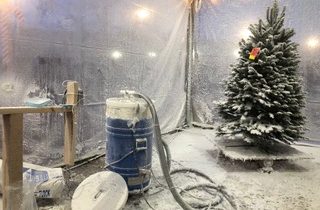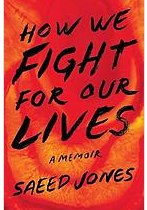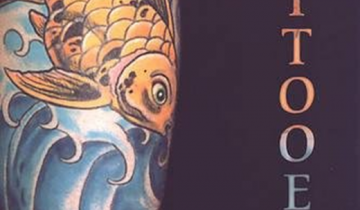OFF THE SHELF #18
The Folks Next Door: The Literatures of LGBT Canada
by Rob Ridinger
For many Americans who do not live in the northern tier of states that share mountains, vast prairies, the Great Lakes and the border hills of New England with Canada, or who have no had occasion to travel there, the dynamic reality of our neighbor nation may be unfamiliar. Many of the research and reference works created on North American LGBT history and culture have a decidedly United States-centered orientation, while the extant literature on Canada’s LGBT communities from Prince Edward Island to British Columbia may not be well traveled on this side of the border. Understanding the varied literature covering the complexities of Canadian LGBT life and history requires certain background information.
Paralleling the homophile and gay liberation eras in the United States and their creation of periodicals written by and for the gay and lesbian readers, Canada’s LGBT press is key to gaining a general sense of the nation’s community and its histories. With the exception of Toronto’s widely quoted longstanding LGBT newspaper of record, The Body Politic, the titles of many of these publications (whether national or provincial in scope) may not be familiar to American readers and librarians. At the same time that The Ladder and The Mattachine Review were in circulation in the United States, the Association for Social Knowledge in Vancouver, Canada’s first organization of homosexuals, printed the first issue of the ASK Newsletter in 1964, beginning a run which would last until 1968. It was followed in 1971 by The Body Politic in Toronto, the Gay Times in Quebec, and locally in Vancouver by Open Doors from the Canadian Gay Activists Alliance. In 1973, Long Time Coming (from the collective of the same name) began publication in Montreal and Gay Tide, published by the Gay Alliance Toward Equality, joined Open Doors in serving the Vancouver gay and lesbian community. Nova Scotia was added to Canada’s LGBT press region with the birth of The Voice in 1976 in Halifax as the publication of the Gay Alliance for Equality, and in 1981, it was joined by Making Waves: An Atlantic Quarterly for Lesbians and Gay Men. The Vancouver Gay Community Centre began publishing Angles in 1983, filling the gap left by the cessation of Rites for Lesbian and Gay Liberation of Gay Tide in 1980. Ontario saw the appearance of the first issues of GLOW News from Waterloo in 1983 and Rites for Lesbian and Gay Liberation in Toronto in 1984. With the demise of The Body Politic in 1987, its role was taken up by the new publication Epicene, which billed itself as “Canada’s gay news magazine.”
The history of the status of Canadian LGBT people as defined by the laws passed by the Parliament in Ottawa as well as provincial and city regulations is likewise an area of background information vital to the comprehension of the range of works published by and about the community. During the colonial era, the laws of New France and British North America both mandated the death penalty for sodomy (with the first recorded case occurring in Quebec in September 1648), although in practice the penalty was usually commuted or pardoned by the colonial governors. The death penalty was assigned to the crime of buggery in the Consolidated Statutes of Canada in 1859, but a decade later was removed for all but the most serious offenses. In 1892, the criminal laws were updated, with one provision covering male homosexual activity under the heading of “gross indecency.” Later changes to the Criminal Code in 1948 and 1961 added language defining gay men as criminal sexual psychopaths and dangerous sex offenders who were subject to prison sentences. It was also during the 1950s and 1960s that a spurious test for homosexuality was developed as part of an effort to eliminate such persons from the military, the civil service, and the Royal Canadian Mounted Police. Based on physiological changes in the human body occurring as a result of sexual response, the “fruit machine” screenings resulted in the Police amassing data on over nine thousand suspected gay people.
The beginning of effective change in the public’s attitude came with the 1965 case of Everett George Klippert, who during questioning as part of an arson investigation in the Northwest Territories admitted to having sex with men. He was then arrested, classified as a sex offender, and sentenced to life imprisonment. The widely circulated news magazine Maclean’s printed an article on his case that was sympathetic to the problems of homosexuals, thus framing the issue as a subject for national debate. The Klippert case triggered calls for the reform of laws relating to homosexuality which culminated in 1967 with the introduction in Parliament by then-Justice Minister Pierre Trudeau of the Criminal Law Amendment Act, one of whose provisions resulted in the decriminalization of homosexual acts between men over the age of twenty-one. The Act was passed into law in 1969, with the first gay pride parade held in Toronto in 1971.
When the Charter of Rights and Freedoms was passed into law in 1982, it did not include sexual orientation as one of the grounds upon which it was illegal to discriminate. At the provincial level, legal protections for homosexuals did exist, with Quebec and Ontario prohibiting discrimination based on sexual orientation in 1977 and 1986 respectively, with similar protections established in Manitoba and Yukon. An excellent outline of the major federal and provincial laws and court cases relating to LGBT civil rights within Canadian laws and jurisprudence can be found in the report prepared by Mary Hurley of the Law and Government Division of the Library of Parliament, “Sexual Orientation and Legal Rights: A Chronological Overview,” most recently updated in 2005. http://publications.gc.ca/collections/Collection-R/LoPBdP/PRB-e/PRB0413-1e.pdf.
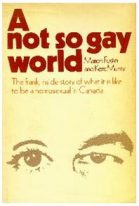 The 1970s also saw the appearance of the first publications discussing the status of gay people, beginning the year after the founding of The Body Politic with A Not So Gay World: Homosexuality in Canada by Marion Foster and Kent Murray. Non-Canadian readers will find the opening chapter a clear picture of the legal status of homosexuals in Canada after the revision of the Criminal Code in 1969. The authors of the book interviewed fifty lesbians and gay men from all across Canada whose assembled stories (many under pseudonyms) comprise the body of the text. Five years later, a pamphlet edited by Duncan McLean, Gay Liberation in Canada: A Socialist Perspective appeared, providing valuable internal documents from Canada’s socialist community on how gay liberation could be placed within their own struggle and what could be learned from its activists. It was followed in 1979 by Susan Tyburn’s brief pamphlet Breaking the Chains: The Struggle for Gay Liberation and Socialism, published in Toronto by the monthly newspaper of the International Socialists. That same year, Alex Spence’s compilation Homosexuality in Canada: A Bibliography was published in Toronto by Pink Triangle Press.
The 1970s also saw the appearance of the first publications discussing the status of gay people, beginning the year after the founding of The Body Politic with A Not So Gay World: Homosexuality in Canada by Marion Foster and Kent Murray. Non-Canadian readers will find the opening chapter a clear picture of the legal status of homosexuals in Canada after the revision of the Criminal Code in 1969. The authors of the book interviewed fifty lesbians and gay men from all across Canada whose assembled stories (many under pseudonyms) comprise the body of the text. Five years later, a pamphlet edited by Duncan McLean, Gay Liberation in Canada: A Socialist Perspective appeared, providing valuable internal documents from Canada’s socialist community on how gay liberation could be placed within their own struggle and what could be learned from its activists. It was followed in 1979 by Susan Tyburn’s brief pamphlet Breaking the Chains: The Struggle for Gay Liberation and Socialism, published in Toronto by the monthly newspaper of the International Socialists. That same year, Alex Spence’s compilation Homosexuality in Canada: A Bibliography was published in Toronto by Pink Triangle Press.
On February 5, 1981, the Toronto police raided the city’s gay bathhouses, resulting in the arrest of over three hundred people, and triggering large demonstrations. The story of the event was chronicled in 1982 by the lengthy documentary film Track Two which provides a singular visual record of a pivotal event in modern LGBT Canadian history and is online at https://vimeo.com/110370890. The title is the term used by the Toronto police when referring to some of the streets that made up the city’s gay district. Flaunting It! : A Decade Of Gay Journalism From The Body Politic : An Anthology edited by 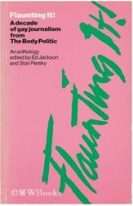 Edward Jackson and Stan Persky also appeared in 1982, making available a representative selection of writing that illustrates the evolution of LGBT journalism and its issues in Canada. The story of the past of the LGBT community in Canada is told in detail in what may be considered the most significant historical work on Canadian LGBT history to appear during the 1980s, The Regulation of Desire: Sexuality In Canada by activist and writer Gary Kinsman, published in 1987. For non-Canadian readers, it provides essential cultural and historical context for same-gender sexuality from the First Nations through New France and the setting up of British rule in addition to reviewing the legal and social frameworks applicable to same-sex activity across Canada in different eras from the mid-1800s through the early 1980s.
Edward Jackson and Stan Persky also appeared in 1982, making available a representative selection of writing that illustrates the evolution of LGBT journalism and its issues in Canada. The story of the past of the LGBT community in Canada is told in detail in what may be considered the most significant historical work on Canadian LGBT history to appear during the 1980s, The Regulation of Desire: Sexuality In Canada by activist and writer Gary Kinsman, published in 1987. For non-Canadian readers, it provides essential cultural and historical context for same-gender sexuality from the First Nations through New France and the setting up of British rule in addition to reviewing the legal and social frameworks applicable to same-sex activity across Canada in different eras from the mid-1800s through the early 1980s.
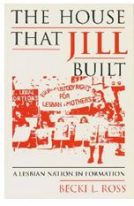 The last decade of the twentieth century witnessed a sizeable increase in the number of books, international reports and dissertations dealing with the social and political structures of LGBT Canadian life. The first of these was Ralf Jurgens’ 1990 master’s thesis from McGill University, Equality and Gay Rights in the United States and In Canada, which compared the approach to equal rights under the U.S. Constitution and the Charter of Rights and Freedoms. The genre of advice books for men and women seeking to build and nourish lasting same-sex partnerships made its appearance in Canadian print in the form of Laurie Bell’s brief 1991 work On Our Own Terms: A Practical Guide for Lesbian and Gay Relationships, published in Toronto by the Coalition for Lesbian and Gay Rights in Ontario. The historical genre initiated by Gary Kinsman in 1987 was expanded in 1992 with the completion of a massive doctoral thesis at the University of Toronto, The House That Jill Built: Reconstructing The Lesbian Organization of Toronto, 1976-1980 by Becki Ross (subsequently published in 1995 by University of Toronto Press as The House That Jill Built: A Lesbian Nation in Formation.) A year later, The Third Pink Book continued the series assessment of LGBT rights and liberation on a global scale with three articles relating to the Canadian scene, “Winning Rights and Freedoms in
The last decade of the twentieth century witnessed a sizeable increase in the number of books, international reports and dissertations dealing with the social and political structures of LGBT Canadian life. The first of these was Ralf Jurgens’ 1990 master’s thesis from McGill University, Equality and Gay Rights in the United States and In Canada, which compared the approach to equal rights under the U.S. Constitution and the Charter of Rights and Freedoms. The genre of advice books for men and women seeking to build and nourish lasting same-sex partnerships made its appearance in Canadian print in the form of Laurie Bell’s brief 1991 work On Our Own Terms: A Practical Guide for Lesbian and Gay Relationships, published in Toronto by the Coalition for Lesbian and Gay Rights in Ontario. The historical genre initiated by Gary Kinsman in 1987 was expanded in 1992 with the completion of a massive doctoral thesis at the University of Toronto, The House That Jill Built: Reconstructing The Lesbian Organization of Toronto, 1976-1980 by Becki Ross (subsequently published in 1995 by University of Toronto Press as The House That Jill Built: A Lesbian Nation in Formation.) A year later, The Third Pink Book continued the series assessment of LGBT rights and liberation on a global scale with three articles relating to the Canadian scene, “Winning Rights and Freedoms in 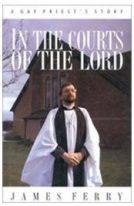 Canada,” “Proper Schooling for Teenage Lesbians in Canada” and “Coming Out as an MP in Canada” by Svend Robinson, who had done exactly that in Ottawa in 1988. 1993 also saw the publication of Gay Studies from the French Cultures: Voices from France, Belgium, Brazil, Canada, and the Netherlands (originally published as two successive issues of the Journal of Homosexuality that year) which contains Line Chamberland’s essay “Remembering Lesbian Bars: Montreal, 1955-1975.” The genre of personal coming-out stories by members of the clergy familiar to American readers from such figures as Troy Perry, Malcolm Boyd and Chris Glaser appears in Canada in 1993 with In the Courts of the Lord: A Gay Minister’s Story by Anglican James Ferry.
Canada,” “Proper Schooling for Teenage Lesbians in Canada” and “Coming Out as an MP in Canada” by Svend Robinson, who had done exactly that in Ottawa in 1988. 1993 also saw the publication of Gay Studies from the French Cultures: Voices from France, Belgium, Brazil, Canada, and the Netherlands (originally published as two successive issues of the Journal of Homosexuality that year) which contains Line Chamberland’s essay “Remembering Lesbian Bars: Montreal, 1955-1975.” The genre of personal coming-out stories by members of the clergy familiar to American readers from such figures as Troy Perry, Malcolm Boyd and Chris Glaser appears in Canada in 1993 with In the Courts of the Lord: A Gay Minister’s Story by Anglican James Ferry.
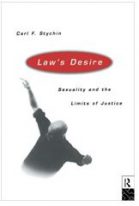 A different take on the struggle for LGBT legal equity in Canada (specifically the amending of Ontario’s Human Rights Code) is seen in Didi Herman’s 1994 treatise Rights of Passage: Struggles For Lesbian and Gay Legal Equality, which looks at the LGBT movement from the perspective of how the legal discourse was framed as an interplay of law reform and the goals of a social movement. Law as the central point of approach to society’s consideration of sexual orientation continued the following year in Carl Stychins’s comparative study of Canada, the United Kingdom, and the United States, Law’s Desire: Sexuality and the Limits of Justice. And librarians in all types of institutions will find Ray Anne Lockard’s short compilation Queer Customs: Censorship on the US-Canadian Border: A Selective Bibliography from 1995 of interest on an aspect of LGBT life not usually thought of by American writers and readers. 1995 also saw the completion of a valuable addition to the body of Canadian lesbian scholarship, the M.A. thesis done by Elis Rose Chenier at Queen’s University, Tough Ladies and Troublemakers: Toronto’s Public Lesbian Community, 1955-1965. A second revised and significantly expanded edition of Gary Kinsman’s 1987 historical work was issued in 1996 under the title The Regulation of Desire: Homo and Hetero Sexualities. Among the changes made were the removal of the section on “Heterosexual Hegemony and the Welfare State”, the renaming of the eighth chapter as “World War II, Coming Out, and Constructing Homosexuality as a National, Social and Sexual Danger” and the expansion and updating of the 1987 chapter on conservative politics and the media to cover “Danger Signals: Moral Conservatism, the Straight Media, the Sex Police and AIDS.” 1996 also saw the publication of Donald McLeod’s Lesbian and Gay Liberation in Canada: A Selected Annotated Chronology, 1964-1975 and the collection of life histories gathered nationwide by Michael Riordon (of The Body Politic staff) Out Our Way : Gay and Lesbian Life in the Country. But the most significant book to appear that year from an historical perspective was Donald Casswell’s massive volume Lesbians, Gay Men, and Ca
A different take on the struggle for LGBT legal equity in Canada (specifically the amending of Ontario’s Human Rights Code) is seen in Didi Herman’s 1994 treatise Rights of Passage: Struggles For Lesbian and Gay Legal Equality, which looks at the LGBT movement from the perspective of how the legal discourse was framed as an interplay of law reform and the goals of a social movement. Law as the central point of approach to society’s consideration of sexual orientation continued the following year in Carl Stychins’s comparative study of Canada, the United Kingdom, and the United States, Law’s Desire: Sexuality and the Limits of Justice. And librarians in all types of institutions will find Ray Anne Lockard’s short compilation Queer Customs: Censorship on the US-Canadian Border: A Selective Bibliography from 1995 of interest on an aspect of LGBT life not usually thought of by American writers and readers. 1995 also saw the completion of a valuable addition to the body of Canadian lesbian scholarship, the M.A. thesis done by Elis Rose Chenier at Queen’s University, Tough Ladies and Troublemakers: Toronto’s Public Lesbian Community, 1955-1965. A second revised and significantly expanded edition of Gary Kinsman’s 1987 historical work was issued in 1996 under the title The Regulation of Desire: Homo and Hetero Sexualities. Among the changes made were the removal of the section on “Heterosexual Hegemony and the Welfare State”, the renaming of the eighth chapter as “World War II, Coming Out, and Constructing Homosexuality as a National, Social and Sexual Danger” and the expansion and updating of the 1987 chapter on conservative politics and the media to cover “Danger Signals: Moral Conservatism, the Straight Media, the Sex Police and AIDS.” 1996 also saw the publication of Donald McLeod’s Lesbian and Gay Liberation in Canada: A Selected Annotated Chronology, 1964-1975 and the collection of life histories gathered nationwide by Michael Riordon (of The Body Politic staff) Out Our Way : Gay and Lesbian Life in the Country. But the most significant book to appear that year from an historical perspective was Donald Casswell’s massive volume Lesbians, Gay Men, and Ca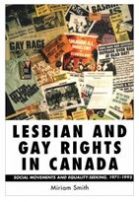 nadian Law.
nadian Law.
In 1997, Terry Goldie, a faculty member of the Robarts Centre for Canadian Studies in Toronto, gave that year’s annual Robarts Lecture and chose as its title “Queer Nation” (available online at http://robarts.info.yorku.ca/files/lectures-pdf/rl_goldie.pdf). He begins by noting the distinctive nature of Canadian “queer” identity as opposed to the definition created over the border in the United Statesby the organization named in his lecture title, then examines homosexuality as a presence in Canada beginning with the cultures of the First Nations. Time periods assessed are the colonial era, the late nineteenth century (which Goldie terms “the age of Wilde”), the 1950s, the Stonewall event (and its questionable status in relation to Canadian gay and lesbian life), and then-contemporary times. It was followed in 1998 by David Rayside’s On the Fringe: Gays and Lesbians in Politics which compares the title subject in Britain and the United States as well as Canada. Chapters four through six examine the political, legislative and commu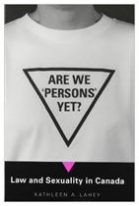 nity history and context of the Canadian Human Rights Act (and its limitations), Ontario’s work for the legal recognition of same-sex relationships, and the career of Svend Robinson, who in February 1988 came out as the first openly gay member of Parliament. The last year of the twentieth century saw the University of Toronto Press continue the focus on LGBT rights with Miriam Smith’s Lesbian and Gay Rights in Canada : Social Movements and Equality-seeking : 1971-1995, Kathleen Lahey’s Are We ‘Persons’ Yet? : Law and Sexuality in Canada, and Peter Dickinson’s Here Is Queer: Nationalisms, Sexualities, and the Literatures of Canada.
nity history and context of the Canadian Human Rights Act (and its limitations), Ontario’s work for the legal recognition of same-sex relationships, and the career of Svend Robinson, who in February 1988 came out as the first openly gay member of Parliament. The last year of the twentieth century saw the University of Toronto Press continue the focus on LGBT rights with Miriam Smith’s Lesbian and Gay Rights in Canada : Social Movements and Equality-seeking : 1971-1995, Kathleen Lahey’s Are We ‘Persons’ Yet? : Law and Sexuality in Canada, and Peter Dickinson’s Here Is Queer: Nationalisms, Sexualities, and the Literatures of Canada.
The new millennium opened with continued research on LGBT identity and its relationship to the Canadian legal process in Bruce MacDougall’s Queer Judgments: Homosexuality, Expression, and the Courts in Canada. In this work, the author examined both unreported and reported cases from 1960 to mid-1997 involving gay people over four decades with an emphasis on the language used to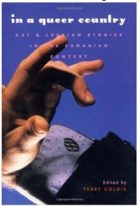 discuss and define both issues and plaintiffs. In his conclusion, MacDougall notes that the question examined has been “the unintentional application by judges of negative or inferiorizing stereotypes to homosexuals or to situations involving homosexuality.” (p.229.) Updated and extended editions of papers given at the Queer Nation? Conference held at York University in 1996 comprise the 2001 volume In a Queer Country: Gay and Lesbian Studies in the Canadian Context edited by Terry Goldie. And Michael Riordon returned with a successor volume to Out Our Way, this time with a focus on the variety of diverse families created by LGBT Canadians, in Eating Fire: Family Life, On the Queer Side.
discuss and define both issues and plaintiffs. In his conclusion, MacDougall notes that the question examined has been “the unintentional application by judges of negative or inferiorizing stereotypes to homosexuals or to situations involving homosexuality.” (p.229.) Updated and extended editions of papers given at the Queer Nation? Conference held at York University in 1996 comprise the 2001 volume In a Queer Country: Gay and Lesbian Studies in the Canadian Context edited by Terry Goldie. And Michael Riordon returned with a successor volume to Out Our Way, this time with a focus on the variety of diverse families created by LGBT Canadians, in Eating Fire: Family Life, On the Queer Side.
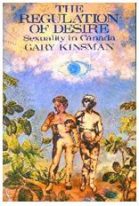 The historical genre begun by Gary Kinsman with The Regulation of Desire was continued in 2002 by Tom Warner’s Never Going Back: A History of Queer Activism in Canada, which covers the subject up to 1999. A notable emphasis in this work is its focus on events taking place outside the metropolitan Toronto area, although the activism there is also set in context. In his introduction, Warner notes that he interviewed over one hundred activists from all provinces and one territory of Canada and that the tapes of these interviews were deposited at the Canadian Lesbian and Gay Archives in Toronto. 2003 saw the appearance of two slightly different works, Terry Goldie’s Pink Snow: Homotextual Possibilities in Canadian Fiction from Broadview Press and Jason Pierceson’s comparative doctoral dissertation in the Department of Politics at Brandeis University, Courts, Liberalism and GLBT Rights: An Analysis of Judicial Policymaking in the United States and Canada. (It would be published in book form in 2005 by Temple University Press under the title Courts, Liberalism, and Rights: Gay Law and Politics in the United States and Canada.) A topic touched upon by
The historical genre begun by Gary Kinsman with The Regulation of Desire was continued in 2002 by Tom Warner’s Never Going Back: A History of Queer Activism in Canada, which covers the subject up to 1999. A notable emphasis in this work is its focus on events taking place outside the metropolitan Toronto area, although the activism there is also set in context. In his introduction, Warner notes that he interviewed over one hundred activists from all provinces and one territory of Canada and that the tapes of these interviews were deposited at the Canadian Lesbian and Gay Archives in Toronto. 2003 saw the appearance of two slightly different works, Terry Goldie’s Pink Snow: Homotextual Possibilities in Canadian Fiction from Broadview Press and Jason Pierceson’s comparative doctoral dissertation in the Department of Politics at Brandeis University, Courts, Liberalism and GLBT Rights: An Analysis of Judicial Policymaking in the United States and Canada. (It would be published in book form in 2005 by Temple University Press under the title Courts, Liberalism, and Rights: Gay Law and Politics in the United States and Canada.) A topic touched upon by 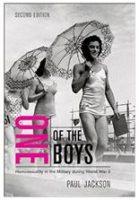 Gary Kinsman in the two editions of The Regulation of Desire was explored in greater detail in 2004 by Paul Jackson in the historical work One of the Boys: Homosexuality in the Military During World War II, the publication in book form of his 2002 doctoral dissertation in history at Queen’s University whose original title was Courting Homosexuals in the Military: the Management of Homosexuality in the Canadian Military, 1939-1945. The thesis also served as the basis for the National Film Board of Canada documentary Open Secrets, issued in 2003. The lives of black Canadians in Ontario and Nova Scotia were explored in Wesley Crichlows’ Buller Men and Batty Bwoys: Hidden Men in Toronto and Halifax Black Communities in 2004, which was based on interviews with nineteen men.
Gary Kinsman in the two editions of The Regulation of Desire was explored in greater detail in 2004 by Paul Jackson in the historical work One of the Boys: Homosexuality in the Military During World War II, the publication in book form of his 2002 doctoral dissertation in history at Queen’s University whose original title was Courting Homosexuals in the Military: the Management of Homosexuality in the Canadian Military, 1939-1945. The thesis also served as the basis for the National Film Board of Canada documentary Open Secrets, issued in 2003. The lives of black Canadians in Ontario and Nova Scotia were explored in Wesley Crichlows’ Buller Men and Batty Bwoys: Hidden Men in Toronto and Halifax Black Communities in 2004, which was based on interviews with nineteen men.
One of the more unusual sources of information on the Canadian LGBT community and their interaction with the nation’s legal system appeared in 2005. Compiled by Mary C. Hurley, of the Library of Parliament’s Parliamentary Information and Research Service Law and Government Division, Sexual Orientation and Legal Rights: A Chronological Overview covers constitutional provisions, judicial decisions, federal and provincial legislation, and materials on same-sex marriage. The total range of the document is from 1867 to 2005.
 The retrieval of LGBT manifestations in Canadian cultural life moved beyond the print genre in 2006 with Thomas Waugh’s The Romance of Transgression in Canada: Queering Sexualities, Nations, Cinemas. This groundbreaking work was followed in 2007 by Rosalind Kerr’s Queer Theatre in Canada and Seminal: the Anthology of Canada’s Gay Male Poets edited by John Barton and Billeh Nickerson. Readers on both sides of the border will find David Rayside’s second comparative study Queer Inclusions, Continental Divisions: Public Recognition of Sexual Diversity in Canada and the United States a valuable complement to his 1998 volume On the Fringe with its focus on same-sex relationships, parenting, queer families and school system issues. 2008 is notable for the exhibition held at the Thomas Fisher Rare Book Library at the University of Toronto, Queer CanLit: Canadian Lesbian, Gay, Bisexual, and Transgender (LGBT) Literature in English curated by Scott Rayter, Maureen FitzGerald and Donald W McLeod. (Accessible at https://tspace.library.utoronto.ca/handle/1807/16670.) A separate catalog of the items presented was also published by the Fisher library. A second valuable contribution to the available documentation on LGBT Canada published in 2008 was the report issued by the Canadian Human Rights Commission, Human Rights Commissions and Public Policy: The Role of the Canadian Human Rights Commission in Advancing Sexual Orientation Equality Rights in Canada authored by Annette Marie Nierobisz, Charles Théroux and Mark Searl. The full text is available online at http://www.deslibris.ca/ID/216887 .
The retrieval of LGBT manifestations in Canadian cultural life moved beyond the print genre in 2006 with Thomas Waugh’s The Romance of Transgression in Canada: Queering Sexualities, Nations, Cinemas. This groundbreaking work was followed in 2007 by Rosalind Kerr’s Queer Theatre in Canada and Seminal: the Anthology of Canada’s Gay Male Poets edited by John Barton and Billeh Nickerson. Readers on both sides of the border will find David Rayside’s second comparative study Queer Inclusions, Continental Divisions: Public Recognition of Sexual Diversity in Canada and the United States a valuable complement to his 1998 volume On the Fringe with its focus on same-sex relationships, parenting, queer families and school system issues. 2008 is notable for the exhibition held at the Thomas Fisher Rare Book Library at the University of Toronto, Queer CanLit: Canadian Lesbian, Gay, Bisexual, and Transgender (LGBT) Literature in English curated by Scott Rayter, Maureen FitzGerald and Donald W McLeod. (Accessible at https://tspace.library.utoronto.ca/handle/1807/16670.) A separate catalog of the items presented was also published by the Fisher library. A second valuable contribution to the available documentation on LGBT Canada published in 2008 was the report issued by the Canadian Human Rights Commission, Human Rights Commissions and Public Policy: The Role of the Canadian Human Rights Commission in Advancing Sexual Orientation Equality Rights in Canada authored by Annette Marie Nierobisz, Charles Théroux and Mark Searl. The full text is available online at http://www.deslibris.ca/ID/216887 .
The current decade opened with Gary Kinsman expanding one topic present in his earlier works into a separate detailed study issued in 2010 as The Canadian War on Queers: National Security as Sexual Regulation from the University of British Columbia Press in Vancouver. 2010 also saw the completion of a revised edition of Mary Hurley’s 2005 document on Sexual Orientation and Legal Rights from the Library of Parliament in Ottawa and the acceptance of Barry Trentham’s Ph.D. dissertation Old Coyotes: Life Histories of Aging Gay Men in Rural Canada by the University of Toronto. In 2011, the series of informational books on Canadian issues About Canada added Peter Knegt’s Queer Rights to its list-readers will find the introductory essay “What Does Our Progress Mean?” useful as an orientation to thinking about contemporary queer history from a Canadian perspective. Issues addressed in Queer Rights include regional organizing, legal reform, the relationship of the queer community to institutions such as the Royal Canadian Mounted Police, religion and the media, questions involved with children, youth and the educational system such as adoption and bullying, health care, and the invisible boundaries of difference based on race, sex and class. The University of British Columbia Press continued its involvement with LGBT topics with the publication in 2011 of Patrice Corriveau’s comparative study Judging Homosexuals: A History of Gay Persecution in Quebec and France. It is based upon the author’s 2003 Ph.D. dissertation and, as he notes in the introduction, “it is important for readers to understand that this book is a sociological and criminological study of the judicial handing of homosexuality in Quebec and France over the past four hundred years, not a historical study of homosexuality per se.” (Corriveau 2011: xi). The pool of research on French Canadian LGBT life was substantially expanded in 2011 by Montreal’s Gay Village: The Story of A Unique Urban Neighborhood through the Sociological Lens written by an urban sociologist resident in the city at McGill University.
The degree of progress and debate within Canada on the definition and range of issues affecting the LGBT community is reflected in the 2012 collection Queerly Canadian: An Introductory Reader in Sexuality Studies from Toronto’s Canadian Scholars Press. Its thirty-six essays are divided 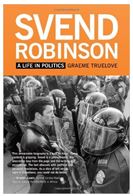 into ten sections covering topics as diverse as identity and nationalism, education, the history of gay and lesbian resistance in Canada, sports, parenting, visual culture, workplace issues, and health and medicine. A second shorter introductory work followed in 2013 from Fernwood Publishing (the same house which had produced Peter Knegt’s Queer Rights) with the title Under the Rainbow: A Primer on Queer Issues in Canada. The other work on LGBT Canadian life which appeared in 2013, Graeme Truelove’s Svend Robinson: A Life In Politics, was a detailed biography of the activist New Democrat member of Parliament who in his career became arguably the most recognizable publicly gay figure to the general Canadian public.
into ten sections covering topics as diverse as identity and nationalism, education, the history of gay and lesbian resistance in Canada, sports, parenting, visual culture, workplace issues, and health and medicine. A second shorter introductory work followed in 2013 from Fernwood Publishing (the same house which had produced Peter Knegt’s Queer Rights) with the title Under the Rainbow: A Primer on Queer Issues in Canada. The other work on LGBT Canadian life which appeared in 2013, Graeme Truelove’s Svend Robinson: A Life In Politics, was a detailed biography of the activist New Democrat member of Parliament who in his career became arguably the most recognizable publicly gay figure to the general Canadian public.
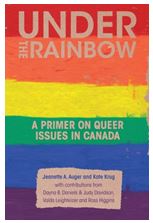 The last two years have seen a continuation of diversification in Canadian LGBT nonfiction literature. With the publication in 2015 of the anthology Queer Mobilizations: Social Movement Activism and Canadian Public Policy, readers were provided with “an overview of political activism from one end of the nation to the other…focusing principally on the organizational and activist of Canadians who identified with the gay liberation and subsequently gay equality movements of the 1960s” (p. vii). The value of the regional perspectives and local history recounted in Queer Mobilizations is also reflected in the stories woven into Liz Millward’s historical work Making a Scene: Lesbians and Community Across Canada, 1964-84. André P Grace and Kristopher Wells’ study Growing Into Resilience : Sexual and Gender Minority Youth in Canada opens with a summary of the history of the 1998 decision by the Supreme Court of Canada in the case of Vriend v. Alberta that “sexual-minority individuals could not be excluded from provincial or territorial human rights legislation” (p.xiii), then moves to set out the issues this population of youth have been and remain confronted with, as a resource for educators and caring professionals, illustrated with personal stories from nine individuals.
The last two years have seen a continuation of diversification in Canadian LGBT nonfiction literature. With the publication in 2015 of the anthology Queer Mobilizations: Social Movement Activism and Canadian Public Policy, readers were provided with “an overview of political activism from one end of the nation to the other…focusing principally on the organizational and activist of Canadians who identified with the gay liberation and subsequently gay equality movements of the 1960s” (p. vii). The value of the regional perspectives and local history recounted in Queer Mobilizations is also reflected in the stories woven into Liz Millward’s historical work Making a Scene: Lesbians and Community Across Canada, 1964-84. André P Grace and Kristopher Wells’ study Growing Into Resilience : Sexual and Gender Minority Youth in Canada opens with a summary of the history of the 1998 decision by the Supreme Court of Canada in the case of Vriend v. Alberta that “sexual-minority individuals could not be excluded from provincial or territorial human rights legislation” (p.xiii), then moves to set out the issues this population of youth have been and remain confronted with, as a resource for educators and caring professionals, illustrated with personal stories from nine individuals.
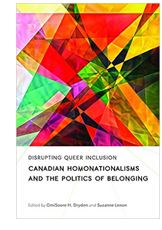 A more challenging book from a theoretical perspective also appeared from the University of British Columbia Press in 2015. As the publisher’s description (available from the UBC website at http://www.ubcpress.com/search/title_book.asp?BookID=299174891) notes, Disrupting Queer Inclusion: Canadian Homonationalisms and the Politics of Belonging “seeks to unsettle the belief that inclusion equals justice”, and it does so by exploring aspects of queer theory, sexism, colonialism and race as present in Canadian society in
A more challenging book from a theoretical perspective also appeared from the University of British Columbia Press in 2015. As the publisher’s description (available from the UBC website at http://www.ubcpress.com/search/title_book.asp?BookID=299174891) notes, Disrupting Queer Inclusion: Canadian Homonationalisms and the Politics of Belonging “seeks to unsettle the belief that inclusion equals justice”, and it does so by exploring aspects of queer theory, sexism, colonialism and race as present in Canadian society in  specific populations. 2016 has seen the publication by the University of British Columbia of the anthology We Still Demand!: Redefining Resistance in Sex and Gender Struggles edited by Patrizia Gentile, the thirteen essays of Queers Were Here: Heroes & Icons of Queer Canada edited by Robin Ganev and R.J. Gilmour, and Tim McCaskell’s Queer Progress: From Homophobia to Homonationalism from Between the Lines in Toronto. Questions raised in the realizing and claiming of an identity as a member of the LGBT community across the diverse cultural and political landscapes of Canada (and the search for uniquely Canadian answers to them) ensure that many more books not yet made will carry their stories out to the world.
specific populations. 2016 has seen the publication by the University of British Columbia of the anthology We Still Demand!: Redefining Resistance in Sex and Gender Struggles edited by Patrizia Gentile, the thirteen essays of Queers Were Here: Heroes & Icons of Queer Canada edited by Robin Ganev and R.J. Gilmour, and Tim McCaskell’s Queer Progress: From Homophobia to Homonationalism from Between the Lines in Toronto. Questions raised in the realizing and claiming of an identity as a member of the LGBT community across the diverse cultural and political landscapes of Canada (and the search for uniquely Canadian answers to them) ensure that many more books not yet made will carry their stories out to the world.
References
Angles. Vancouver: Vancouver Gay Community Centre Society, 1983-1998.
ASK Newsletter. Vancouver: Association for Social Knowledge, 1964-1968.
Auger, Jeanette A. and Kate Krug. Under the Rainbow: A Primer on Queer Issues in Canada. Halifax and Winnipeg: Fernwood Publishing, 2013.
Bell, Laurie. On Our Own Terms: A Practical Guide for Lesbian and Gay Relationships. Toronto, Ontario: Coalition for
Lesbian and Gay Rights in Ontario, 1991.
The Body Politic. Toronto, 1971-1987.
“Canada “in The Second ILGA Pink Book: A Global View of Lesbian and Gay Liberation and Oppression. Utrecht: Interfacultaire Werkgroep Homostudies, Rijksuniversiteit Utrecht, 1988: 200.
Casswell, Donald G. Lesbians, Gay Men, and Canadian Law. Toronto: E. Montgomery Publications, 996.
Chamberland, Line. “Remembering Lesbian Bars: Montreal, 1955-1975 “in Gay Studies from the French Cultures: Voices from France, Belgium, Brazil, Canada, and the Netherlands edited by Rommel Mendès-Leite and Pierre-Olivier de
Busscher. New York: Haworth Press, 1993: 231-269.
Chenier, Elise Rose. Tough Ladies and Troublemakers: Toronto’s Public Lesbian Community, 1955-1965. M.A. thesis, -Queen’s University (Kingston, Ontario), 1995.
Corriveau, Patrice. Judging Homosexuals: A History of Gay Persecution in Quebec and France .Vancouver: UBC Press, 2011.
Crichlow, Wesley. Buller Men and Batty Bwoys: Hidden Men in Toronto and Halifax Black Communities Toronto: University of Toronto Press, 2004.
Dickinson, Peter. Here Is Queer: Nationalisms, Sexualities, and the Literatures of Canada. Toronto; Buffalo: University of Toronto Press, 1999.
Disrupting Queer Inclusion: Canadian Homonationalisms and the Politics of Belonging edited by Omisoore H. Dryden and Suzanne Lemon. University Of Brit Columbia Press, 2015.
Epicene: Canada’s Gay News Magazine. Toronto: Lambda Resources. First issue 1987.
Ferry, James. In the Courts of the Lord: A Gay Minister’s Story. Toronto: Key Porter Books, 1993.
Flaunting it! : A Decade of Gay Journalism from The Body Politic: An Anthology edited by Edward Jackson, and Stan
Persky. Vancouver: New Star Books; Toronto: Pink Triangle Press, 1982.
Foster, Marion and Kent Murray. A Not So Gay World: Homosexuality in Canada. Toronto, McClelland and Stewart, 1972.
Gay Tide. Vancouver: Gay Tide Committee of the Vancouver Gay Alliance toward Equality, 1973-1980.
Gay Times. Montreal, Québec, First issue 1975.
GLOW News. Waterloo, Ontario: Gay Liberation of Waterloo: First issue 1983.
Goldie, Terry. Queer Nation? Toronto: Robarts Centre for Canadian Studies, 1997.
Goldie, Terry. In A Queer Country: Gay and Lesbian Studies in the Canadian Context. Vancouver: Arsenal Pulp Press, 2001.
Goldie, Terry. Pink Snow: Homotextual Possibilities in Canadian Fiction. Peterborough, Ont.; Orchard Park, NY: Broadview Press, 2003.
Grace, Andre P. and Kristopher Wells. Growing Into Resilience: Sexual and Gender Minority Youth in Canada. Toronto: University of Toronto Press, 2015.
Hendriks, Aart, Rob Tielman and Evert van der Veen. The Third Pink Book: A Global View of Lesbian and Gay Liberation and Oppression. Buffalo, N.Y.: Prometheus Books, 1993.
Herman, Didi. 1994 Rights of Passage: Struggles for Lesbian and Gay Legal Equality. Toronto; Buffalo: University of Toronto Press, 1994.
Hinrichs, Donald W. Montreal’s Gay Village: The Story of A Unique Urban Neighborhood through the Sociological Lens by. Hinrichs, Donald W. Bloomington, Indiana: iUniverse, 2011.
Human Rights Commissions and Public Policy : the Role of the Canadian Human Rights Commission in Advancing Sexual Orientation Equality Rights in Canada by Annette Marie Nierobisz, Charles Théroux and Mark Searl. Ottawa, Ontario: Canadian Human Rights Commission, 2008. http://www.deslibris.ca/ID/216887
Hurley, Mary C. Sexual Orientation and Legal Rights: A Chronological Overview. Ottawa, Ontario: Library of Parliament, Parliamentary Information and Research Service, Law and Government Division, 2005. http://publications.gc.ca/collections/Collection-R/LoPBdP/PRB-e/PRB0413-1e.pdf
Hurley, Mary C. Sexual Orientation and Legal Rights. Revised edition. Ottawa: Library of Parliament, 2010.
Jackson, Paul. One of the Boys: Homosexuality in the Military during World War II. Montreal; Ithaca: McGill-Queen’s University Press, 2004.
Jurgens, Ralf Erich. Equality and Gay Rights in the United States and in Canada. Ph.D. thesis, McGill University, 1990.
Kerr, Rosalind. Queer Theatre in Canada. Toronto, Canada: Playwrights Canada Press.
Kinsman, Gary William. The Regulation of Desire: Sexuality in Canada. Montréal, Québec. Canada ; Cheektowaga, N.Y., U.S.A. : Black Rose Books, 1987.
Kinsman, Gary William. The Regulation of Desire: Homo and Hetero Sexualities. Montréal, Québec, Canada; Cheektowaga, N.Y., USA: Black Rose Books, 2nd ed., rev., 1996.
Kinsman, Gary William. and Patrizia Gentile. The Canadian War on Queers: National Security as Sexual Regulation. Vancouver, B.C.: University of British Columbia Press, 2010.
Knegt. Peter. Queer Rights. Halifax: Fernwood Publishing., 2011.
The Ladder. Daughters of Bilitis, 1956-1972.
Lahey, Kathleen A. Are We ‘Persons’ Yet? : Law and Sexuality in Canada. Toronto; Buffalo: University of Toronto Press, 1999.
Lockard, Ray Anne and Thomas Waugh. Queer Customs: Censorship on the US-Canadian Border: A Selective Bibliography. Montreal, Quebec: Concordia University, 1995.
Long Time Coming. Montreal, Quebec: Jackie Manthorne, 1973-1976.
McCaskell, Tim. Queer Progress: From Homophobia to Homonationalism . Toronto: Between the Lines, 2016.
MacDougall, Bruce. Queer Judgments: Homosexuality, Expression, and the Courts in Canada. Toronto, Buffalo: University of Toronto Press, 2000
McLean, Duncan. Gay Liberation in Canada: A Socialist Perspective. Toronto and New York: Pathfinder Press 1977.
McLeod, Donald W. Lesbian and Gay Liberation in Canada: A Selected Annotated Chronology, 1964-1975. Toronto: ECW Press/Homewood Books, 1996.
Making Waves: An Atlantic Quarterly for Lesbians & Gay Men. Halifax, N.S. Making Waves, 1981-1982.
The Mattachine Review. Mattachine Society, 1955-1966.
Millward, Liz. Making a Scene: Lesbians and Community Across Canada, 1964-84. Vancouver; Toronto: University of British Columbia Press, 2015.
Open Doors. Vancouver, Canadian Gay Activists Alliance, 1971-1973.
Open Secrets by Shelley Tepperman, Germaine Ying Gee Wong, and Jose Torrealba. Montréal: National Film Board of Canada, 2003.
Pierceson, Jason. A. Courts, Liberalism and GLBT Rights: An Analysis of Judicial Policymaking in the United States and Canada. Ph. D. dissertation Brandeis University; 2003
Pierceson, Jason A. Courts, Liberalism, and Rights: Gay Law and Politics in the United States and Canada. Philadelphia, PA: Temple University Press, 2005.
Queer CanLit: Canadian Lesbian, Gay, Bisexual, and Transgender (LGBT) Literature in English: An Exhibition curated by Scott Rayter; Maureen FitzGerald; Donald W McLeod. Toronto: Thomas Fisher Rare Book Library, 2008.
Queer Mobilizations: Social Movement Activism and Canadian Public Policy edited by Marion Tremblay. Vancouver; Toronto: UBC Press, 2015.
Queerly Canadian: An Introductory Reader in Sexuality Studies edited by Maureen FitzGerald and Scott Rayter. Toronto: Canadian Scholars’ Press, 2012.
Queers Were Here: Heroes & Icons of Queer Canada edited by Robin Ganev and R.J. Gilmour. Windsor, Ontario: Biblioasis, 2016.
Rayside, David Morton. On the Fringe: Gays and Lesbians in Politics. Ithaca: Cornell University Press, 1998.
Rayside, David Morton. Queer Inclusions, Continental Divisions: Public Recognition of Sexual Diversity in Canada and the United States .Toronto; Buffalo: University of Toronto Press, 2008.
Riordon, Michael. Out Our Way: Gay and Lesbian Life in the Country. Toronto: Between the Lines, 1996.
Riordon, Michael. Eating Fire: Family Life, On the Queer Side. Toronto: Between the Lines, 2001.
Rites for Lesbian and Gay Liberation. Toronto, Rites Publishing, 1984-1990.
Ross, Becki L. The House That Jill Built: Reconstructing the Lesbian Organization of Toronto, 1976-1980 Ph.D. thesis, University of Toronto, 1992.
Ross, Becki L. The House That Jill Built: A Lesbian Nation in Formation. Toronto: University of Toronto Press, 1995.
Seminal: The Anthology of Canada’s Gay Male Poets edited by John Barton and Billeh Nickerson. Vancouver: Arsenal Pulp Press, 2007.
Smith, Miriam Catherine. Lesbian and Gay Rights in Canada: Social Movements and Equality-seeking: 1971-1995. Toronto; Buffalo: University of Toronto Press, 1999.
Spence, Alex. Homosexuality in Canada: A Bibliography. Toronto: Pink Triangle Press, 1979.
Stychin, Carl F. Law’s Desire: Sexuality and the Limits of Justice. London; New York: Routledge, 1995.
Track Two: Enough is enough. Toronto: Keith, Lemmon, Sutherland Communications Corporation, 1983. https://vimeo.com/110370890
Trentham, Barry. Old Coyotes: Life Histories of Aging Gay Men in Rural Canada. Ph.D. dissertation, University of Toronto; 2010.
Truelove, Graeme. Svend Robinson: A Life in Politics. Vancouver, British Columbia: New Star Books, 2013.
Tyburn, Susan. Breaking the Chains: The Struggle for Gay Liberation and Socialism. Toronto: Worker’s Action Books, 1979.
The Voice. Halifax: Gay Alliance for Equality, First issue 1976.
Warner, Tom. Never Going Back: A History of Queer Activism in Canada. Toronto: University of Toronto Press, 2002.
Waugh, Thomas. The Romance of Transgression in Canada: Queering Sexualities, Nations, Cinemas. Montreal: McGill-Queen’s University Press, 2006.
We Still Demand! : Redefining Resistance in Sex and Gender Struggles edited by Patrizia Gentile. University of British Columbia Press, 2016.
Copyright R. Ridinger 2016.
